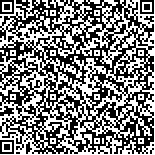下载中心
优秀审稿专家
优秀论文
相关链接
摘要

以黑河实验区为例, 基于HJ-1 CCD数据和中分辨率成像光谱仪(MODIS) 二向性反射(BRDF)和反照率产品的备用算法(算法Ⅰ), 贝叶斯原理的反照率反演算法(算法Ⅱ)和地表朗伯假设的算法(算法Ⅲ)成功估算了地表短波反照率。对反演结果进行分析并与地表观测数据进行比较, 结果表明: (1) 高分辨率的HJ-1卫星地表反照率不仅能够提供下垫面主要的空间分布特征, 还能提供地表细部结构;(2) 两种基于先验知识的地表反照率和MODIS产品接近, 绝对误差为0.01, 相对误差为4%, 而算法Ⅲ的绝对误差为0.03, 相对误差为13%; 算法Ⅰ和Ⅱ对反照率的改善对地表类型的依赖不明显, 相对误差集中在2%-8%, 反演结果对时相变化依赖较为显著, 在植被最茂盛的季节反照率改善作用明显优于凋谢季;(3) 算法Ⅰ和算法Ⅱ的结果与地表观测结果更为吻合, 均方根误差在0.05以内, 相对误差小于23%, 而算法Ⅲ的均方根误差为0.069, 相对误差为36.3%;(4) 先验知识的作用可能依赖于太阳和观测几何的相对位置, 因此可能依赖于季节和纬度的变化, 以及传感器的成像方式。该研究对缺乏多角度观测的星载传感器的反照率反演有重要的参考价值。
This paper estimated HJ-1 land surface albedos in the Heihe region using the backup algorithm of Moderate Resolution Imaging Spectroradiometer (MODIS) Bidirectional Reflectance Distribution Function (BRDF)/Albedo product (method Ⅰ), the Bayesian inference-based algorithm (method Ⅱ) and the Lambertian surface algorithm (method Ⅲ). Compared inversed albedos with surface observations, statistical analysis results showed that: (1) The high resolution albedos from HJ-1 CCD data can provide spatial distribution of underlying surface as well as surface details. Different land cover types' statistic values indicates that method Ⅰ and method Ⅱ capture similar results, with the absolute error of 0.01 and the relative error of 4% as compared with albedos from MODIS, while method Ⅲ has the absolute error of 0.03 and relative error of 13%.(2) The improvement in the albedo by method Ⅰ and method Ⅱ is almost independent to land cover types, capturing relative error between 2% and 8%; However, the temporal reliance of estimated albedo is more significant, and the improvement is more obvious in the maturity than in the dormancy. (3) Surface albedos estimated by method Ⅰ and method Ⅱ have better consistency with field observations.The root mean square errors are less than 0.05, and relative errors are less than 23%, while results of method Ⅲ are 0.069 and 36.3%, respectively. (4) The retrieval of albedos based on the prior knowledge may depend on the geometry of the sun and the observation, and thus depend on the season and the latitude, as well as sensor specifications. This study will provide significant understanding for space-borne albedo retrieval which lacks of sufficient multi-angular observations.

